Want more control over where your video ads show on YouTube? Wondering how to target your ads to show up on competitors' content?
In this article, you’ll learn how to use content targeting to choose where your YouTube ads display—from certain channels and videos to content that fits specific topics and keywords.
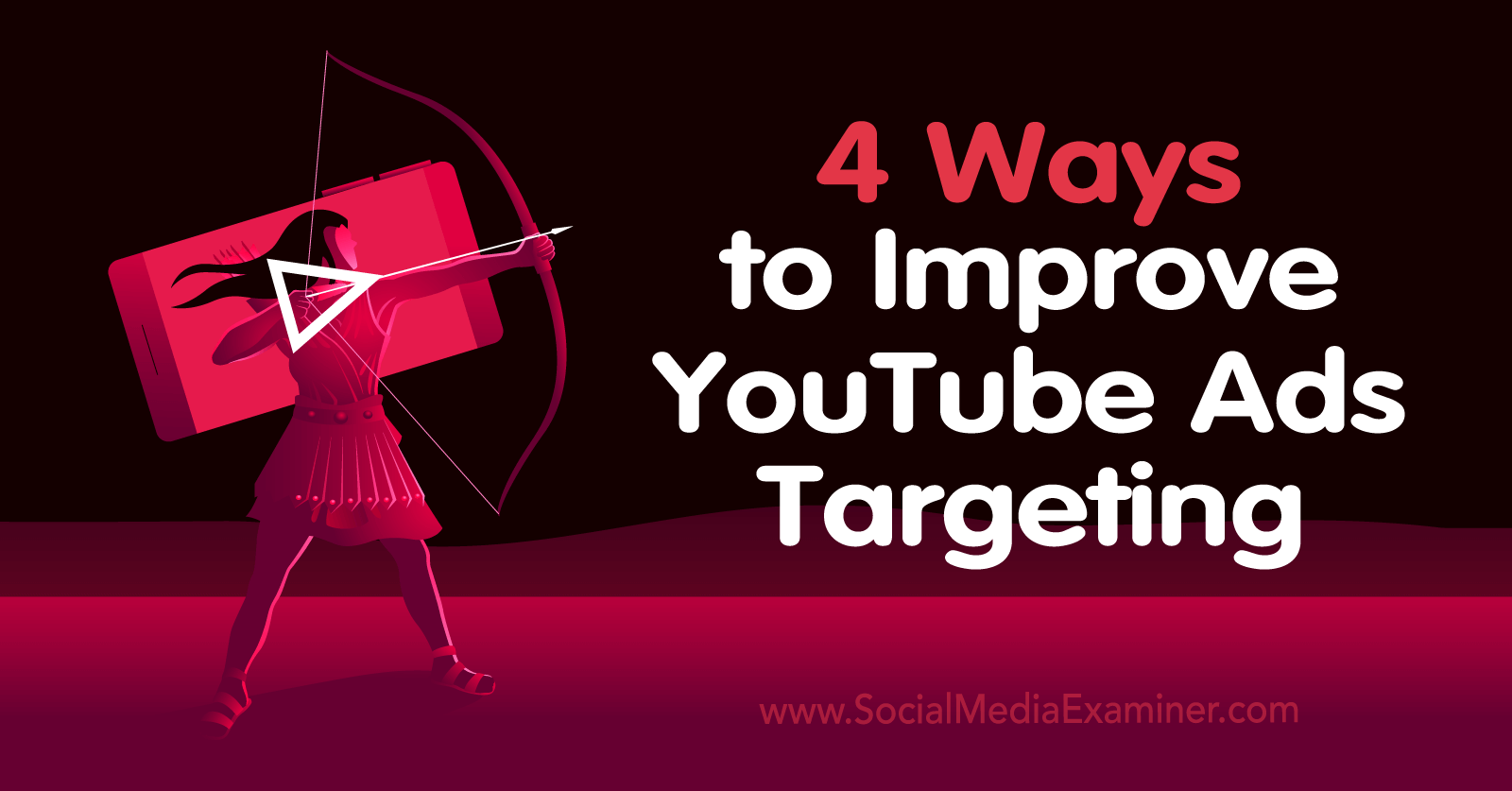
What Is YouTube Content Targeting?
YouTube content targeting lets you choose where to place your YouTube advertising videos so you can advertise on the videos and channels that align best with your goals. With Google Ads’ content targeting, you have the option to take either a broad or narrow approach:
- To target broadly, you can define the topics and keywords that fit your ideal audience.
- To target narrowly, you can advertise on specific channels and videos, even those that belong to your competitors.
Most YouTube content targeting options apply at the ad group level aside from device targeting, which applies at the campaign level. You can add any combination of these content targeting signals during the campaign setup process.
You can also add them to existing ad groups by selecting an ad group and opening the Content drop-down from the left-hand menu. From there, select a type of content and click the pencil icon to adjust the targeting.
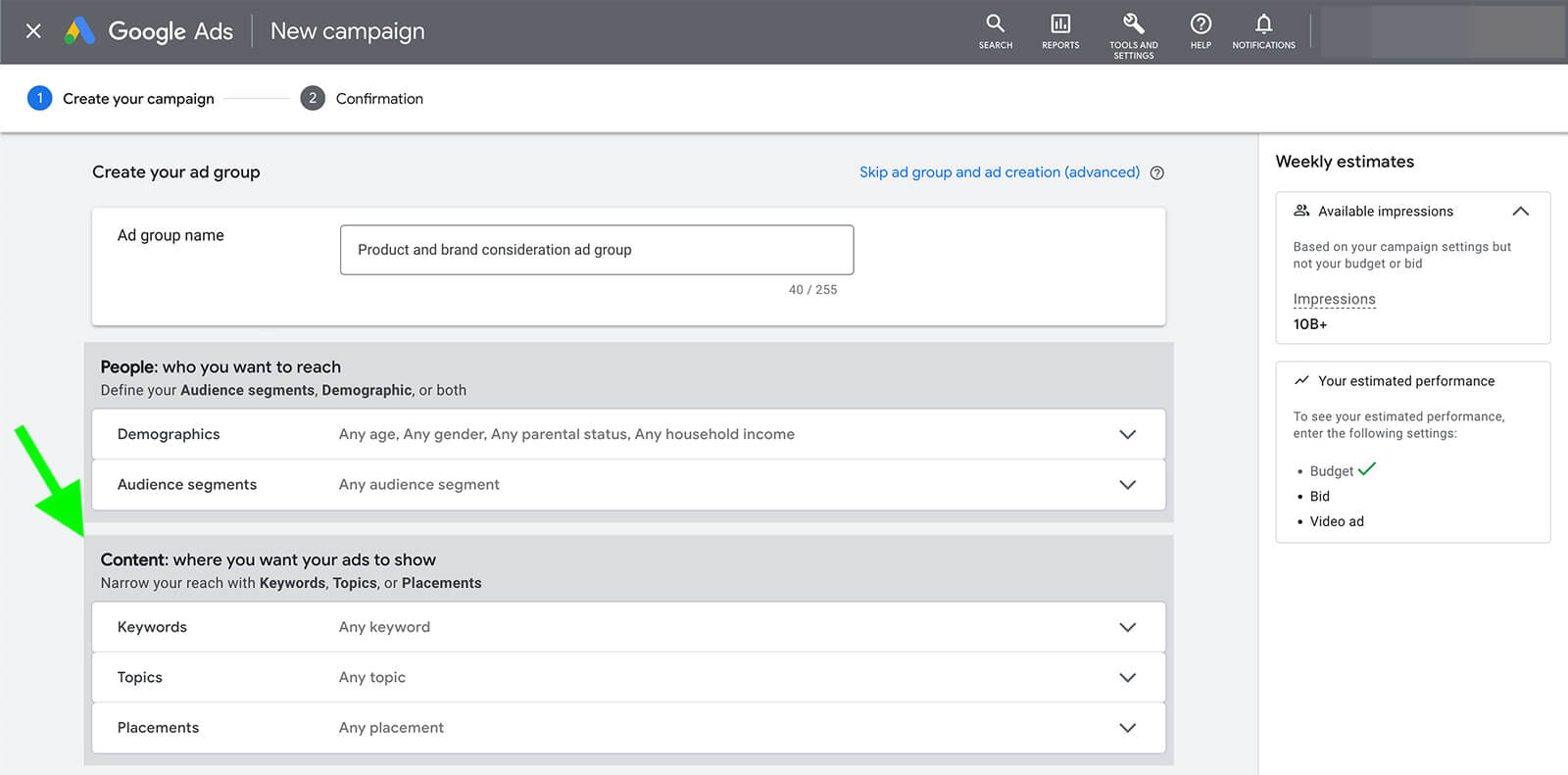
Tips for Using Content Targeting
Before you start adding content targeting to YouTube ads, it’s important to note that these signals can affect conversion metrics, sometimes negatively. If you add content targeting to a video campaign with a sales or leads goal, you might even see a warning about potential performance issues.
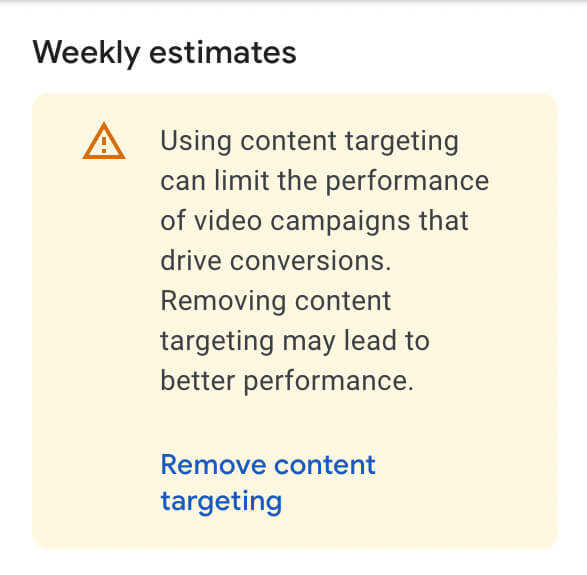
As a result, it’s usually best to use content targeting with campaigns at the top or middle of the funnel. In other words, consider using it with brand awareness or product and brand consideration goals. When you want to reach people who are ready to convert, consider using audience targeting to reach engaged users with purchase intent.
In addition, combining multiple types of content targeting can limit the reach of your campaigns significantly. With severely limited reach, you may see poor performance and wasted ad spend. To avoid potential issues, test various types of content targeting and choose the best one to use.
Content Targeting vs. Audience Targeting
Content targeting is just one option for reaching your target audience on YouTube. Google Ads also has extensive audience targeting options that let you deliver ads to people based on their:
- Demographics and life events
- Interests and purchase intentions
- Interactions with your website or YouTube channel
You can also upload your customer lists to Google Ads to create highly targeted segments based on first-party data. YouTube ads also support custom segments that let you target users based on Google searches.
When you set up YouTube ads, you can use audience targeting, content targeting, or both. As you add targeting options to video campaigns, pay attention to the forecast in the upper-right corner. It’s important to make sure your targeting is defined enough to be relevant without making your potential audience too small for efficient ad delivery.
#1: How to Target Your YouTube Ads by Placements
YouTube placement targeting lets you display video ads on certain YouTube videos and channels. To add placement targeting to an ad group, scroll down to the Content section and open the Placements drop-down menu.
How to Show Ads on Certain YouTube Channels
To show your ads on any content published on certain channels, choose YouTube Channels. Then enter the URLs for the YouTube channels of your choice or use the built-in search tool to find relevant channels.
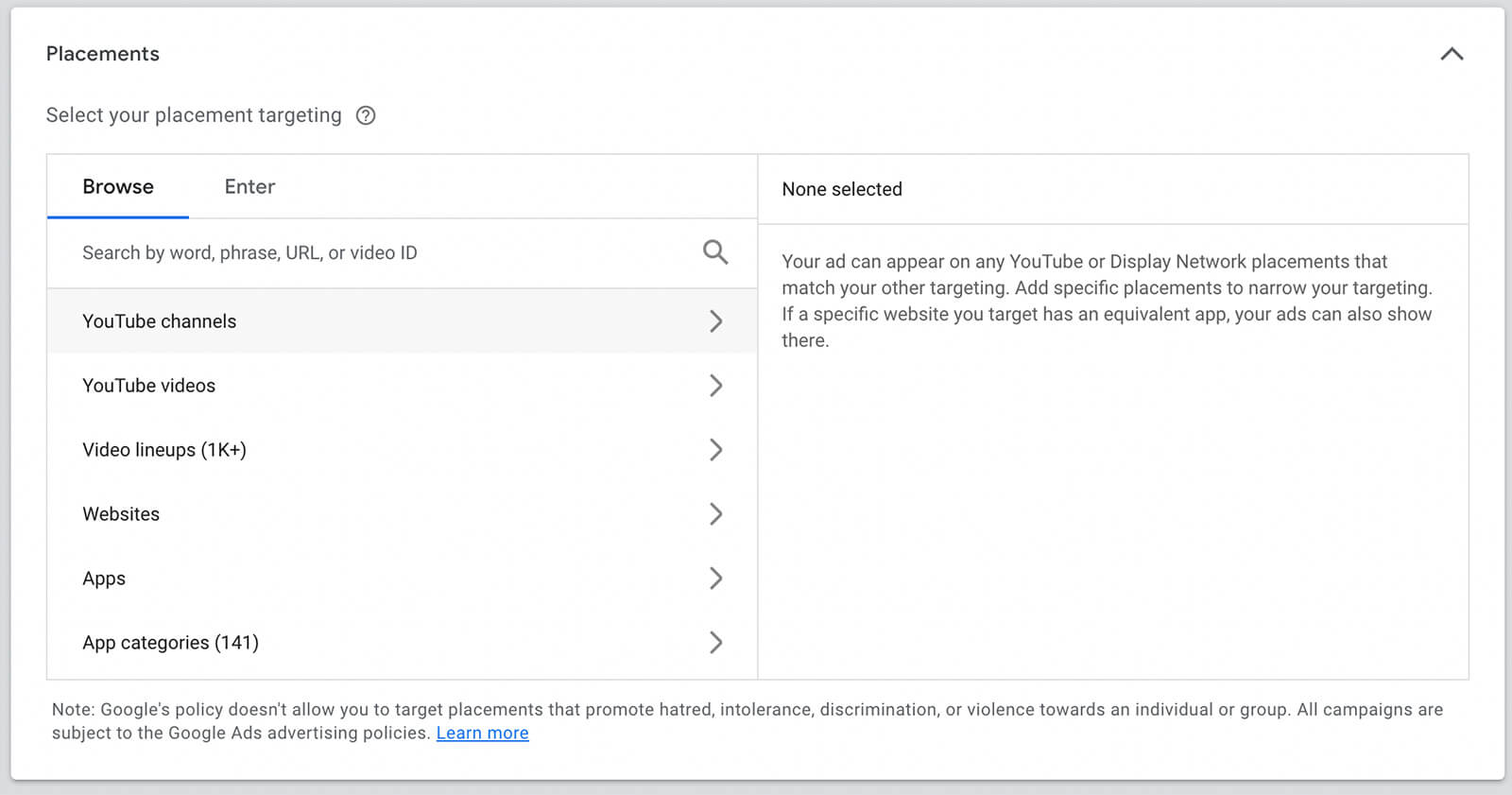
In addition to showing your ads on your brand’s own YouTube channel, it’s often a good idea to advertise on other important channels in your industry. Not sure where to start? Use your buyer persona to identify your audience’s interests and then find channels that match. For example, bloggers, creators, and complementary brands could all be good channels to target.
Get World-Class Marketing Training — All Year Long!
Are you facing doubt, uncertainty, or overwhelm? The Social Media Marketing Society can help.
Each month, you’ll receive training from trusted marketing experts, covering everything from AI to organic social marketing. When you join, you’ll also get immediate access to:
- A library of 100+ marketing trainings
- A community of like-minded marketers
- Monthly online community meetups
- Relevant news and trends updates
You can also use your Google Ads insights to find channels to target. In the left-hand menu, click Content, and then select Placements. If you’ve already chosen some placements, you can review performance here.

Otherwise, click See Where Your Ads Appeared to review the actual placements for your video ads. Use the filter to view YouTube placements only. Then sort the results by the metrics that matter the most to your business such as clicks or conversions. If you find YouTube channels that drive particularly great results, add them to your placement targeting list.
How to Show Ads on Certain YouTube Videos
With YouTube video targeting, you can select even more granular ad placements. Under Placements, select YouTube Videos and enter the URLs for videos where you want to show your ad.
Not sure where to start? If you don’t have specific videos in mind, you can type a word or phrase into the search bar to get ideas.
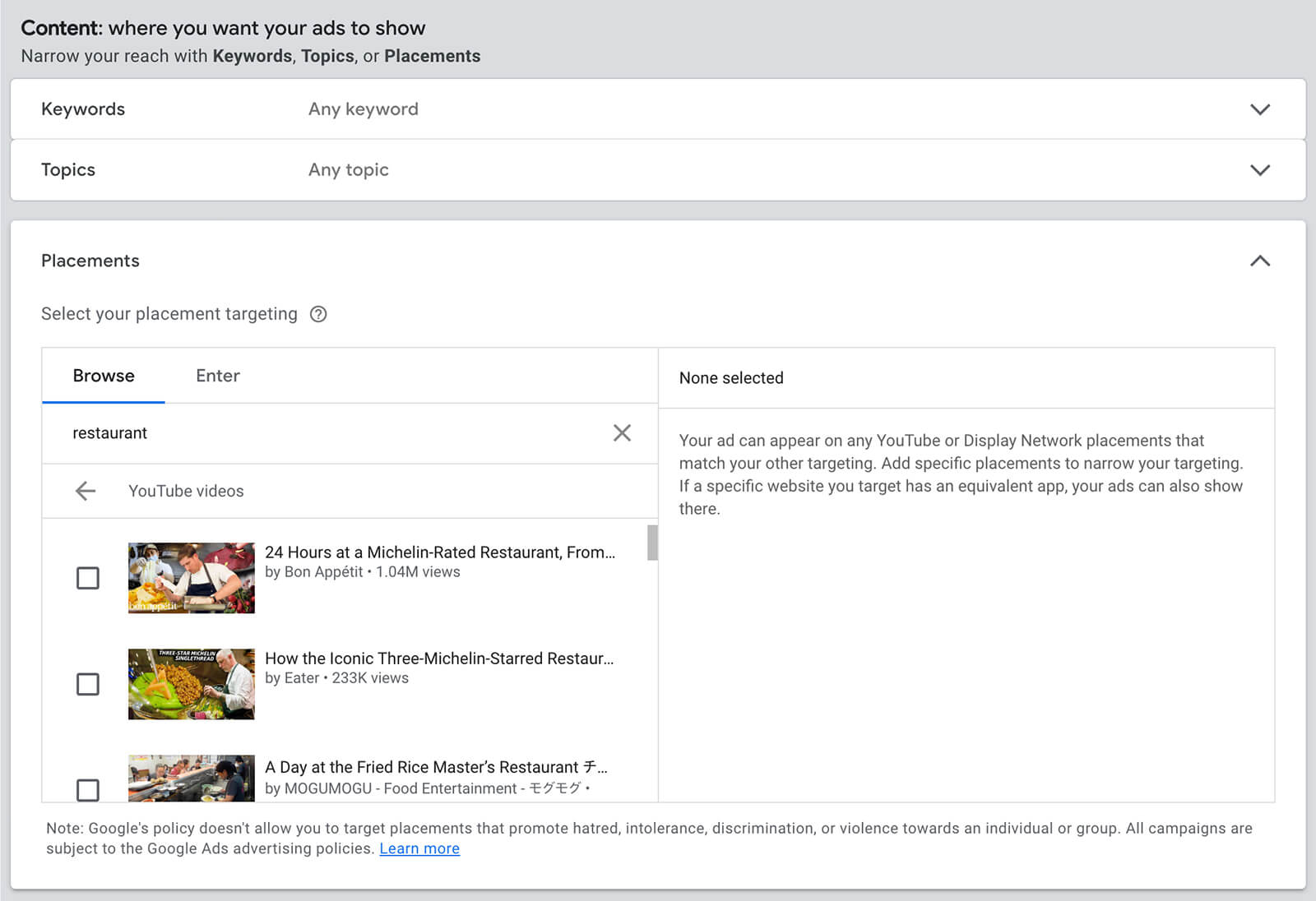
Alternatively, you can target viral videos in your industry or evergreen videos that your customers tend to watch when they’re just starting to become interested in your niche. You can also target specific videos on your channel, especially if your ad offers a solution to a problem your video discusses.
How to Exclude Certain Channels or Videos From Your YouTube Ads Placements
To prevent YouTube content targeting from becoming overly broad, you can selectively exclude placements. To create a list of placements to exclude, click Tools and Settings in the main Google Ads menu. Select Placement Exclusion Lists and click the plus icon to build your list. You can add any combination of channels and videos.
To start excluding placements, select a list and click Apply to Campaigns. Then check all relevant campaigns in the pop-up list.
#2: How to Target YouTube Ads by Topics
While placements let you build relatively narrow targeting for YouTube ads, topics allow you to place ads on a much wider range of content. If you want to reach people who are viewing content in a certain category, topic targeting can be helpful.
But it’s important to remember that not all videos on the same topic have the same quality level, perspective, or audience. So by targeting topics, you could reach people with vastly different awareness levels or at various stages of their customer journey.
To select topics for your ad group targeting, open the Topics drop-down menu under Content. Then you can scroll through the broad topics and check any relevant ones to apply them to your ad group.
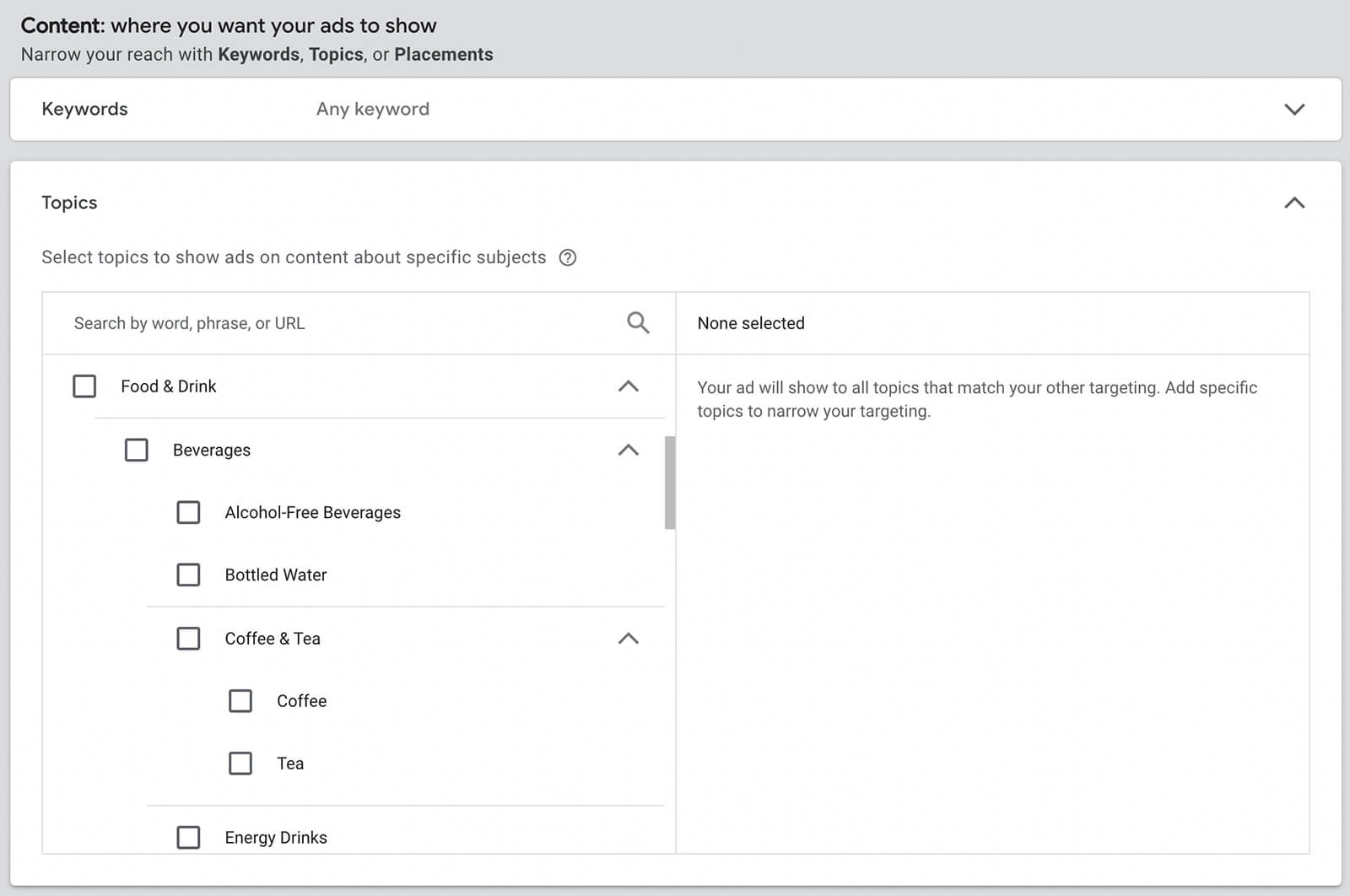
To target a bit more narrowly, click the arrow to the right of any topic. From there, you can see more defined categories including multiple levels of topic options.
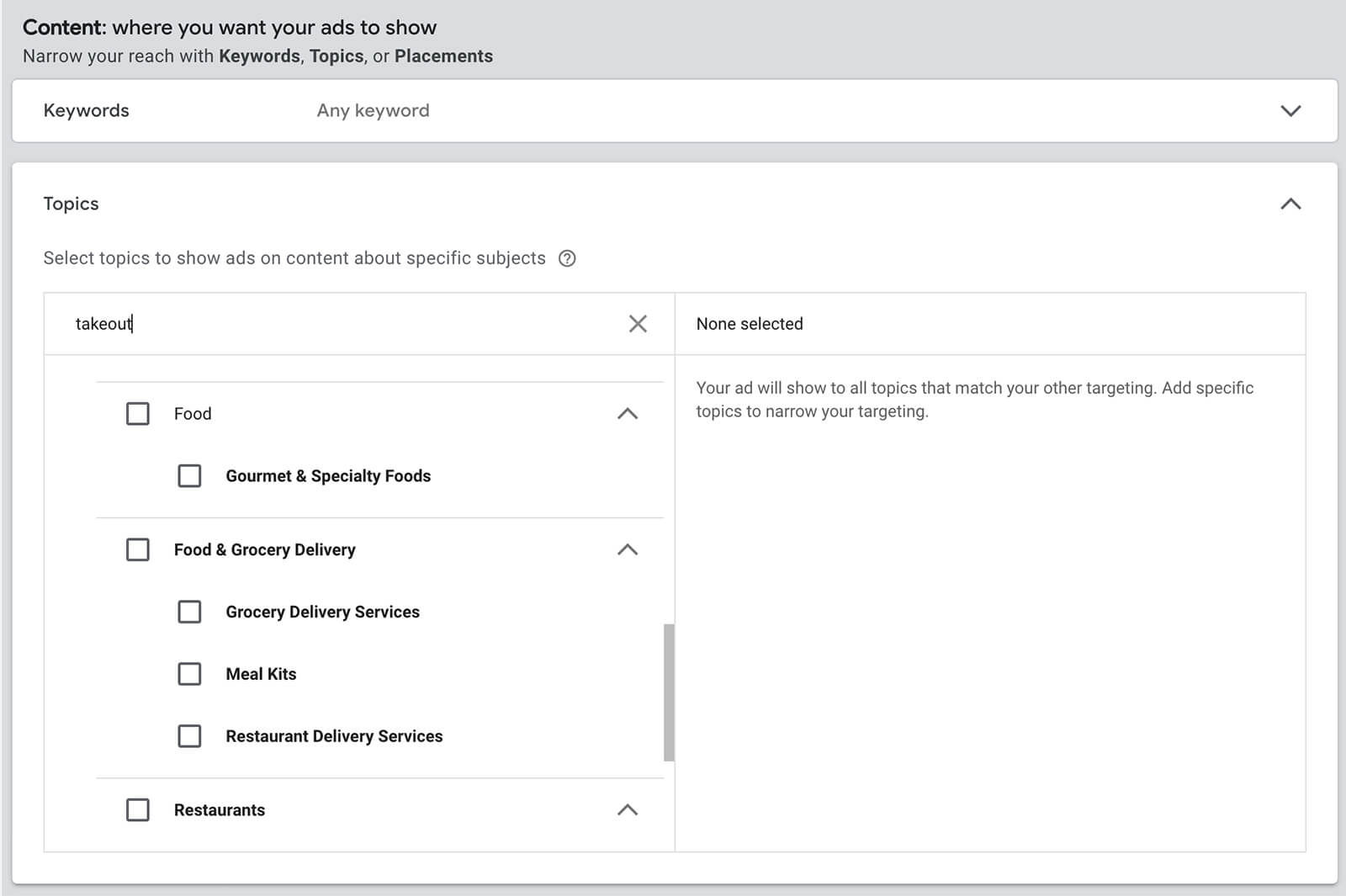
Use your campaign goals to choose the best targeting level for your audience. For example, if your goal is brand awareness, broader topic targeting could help you reach a wider audience. But if your goal is product and brand consideration, choosing a narrower topic is more likely to help you spend your ad budget wisely.
You can also use the search bar to find topics with various keywords. This option is helpful for finding adjacent topics that can expand your targeting so you can deliver ads on more relevant content.

Discover Proven Marketing Strategies and Tips
Want to go even deeper with your marketing? Check out the Social Media Marketing Podcast! Publishing weekly since 2012, the Social Media Marketing Podcast helps you navigate the constantly changing marketing jungle, with expert interviews from marketing pros.
But don’t let the name fool you. This show is about a lot more than just social media marketing. With over 600 episodes and millions of downloads each year, this show has been a trusted source for marketers for well over a decade.
#3: How to Target YouTube Ads by Keywords
YouTube ad campaigns also support keyword targeting. But keyword targeting for video campaigns works a bit differently than it does with search campaigns.
Unlike search ads, your video doesn’t necessarily need to show the keywords in the description or content. In addition, match types don’t apply to YouTube keyword targeting. That means there’s no need to differentiate among broad, phrase, or exact match keywords.
It’s often a good idea to use dozens of keywords for YouTube content targeting—far more than you’d use in a search campaign ad group. Once you publish your ad group, you can monitor performance and remove under-performing keywords as necessary.
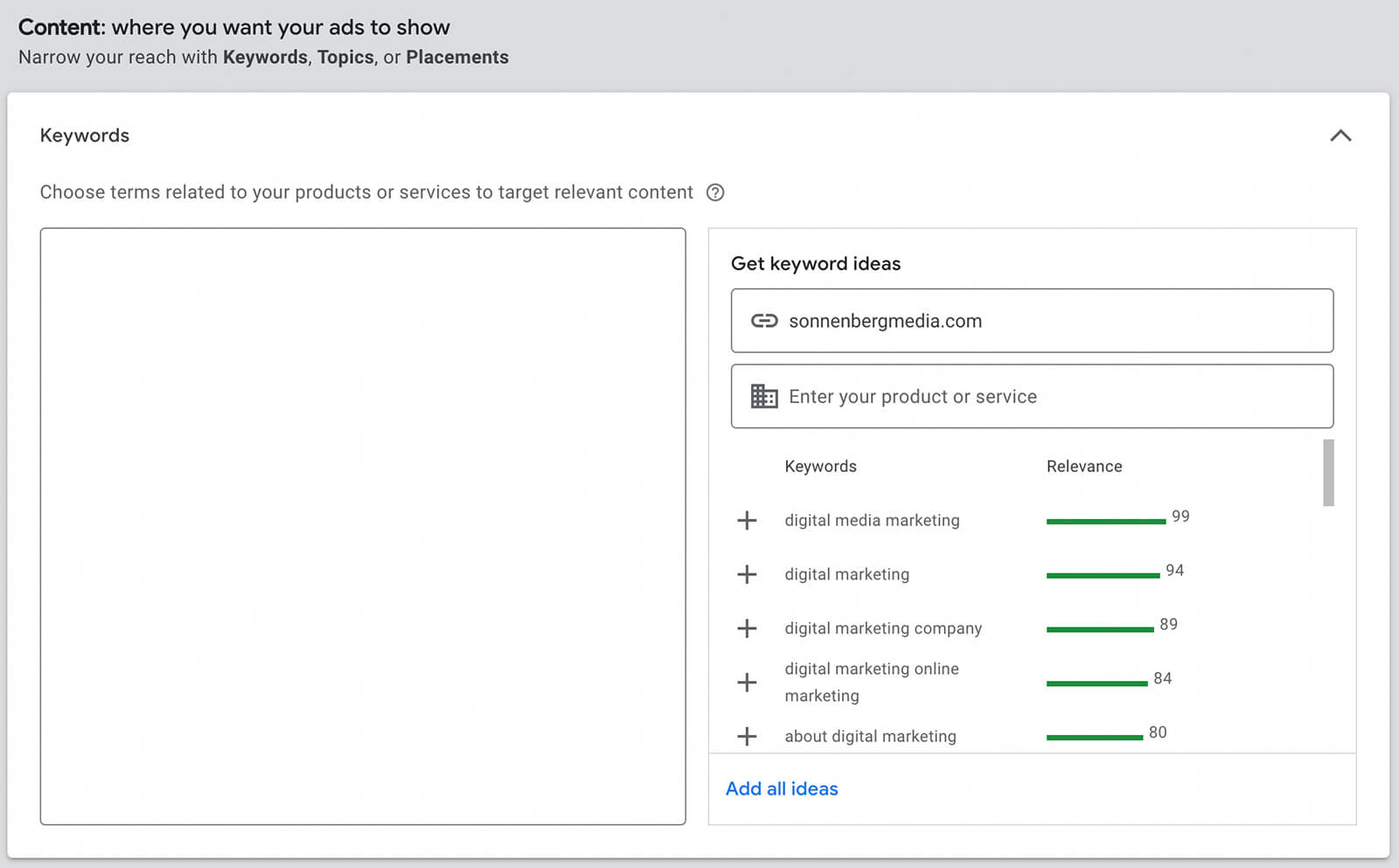
If you already have a keyword list, you can paste it into Google Ads at the ad group level. If you’re not sure where to start, use Google Ads’ built-in suggestion tool. Start by entering the URL for your organization’s domain or ad’s landing page.
Google Ads automatically sorts the ideas by relevance so you can quickly find good keywords to use. You can click the plus sign to the left of any suggested keyword to add it to the ad group. To add the entire list, click Add All Ideas.
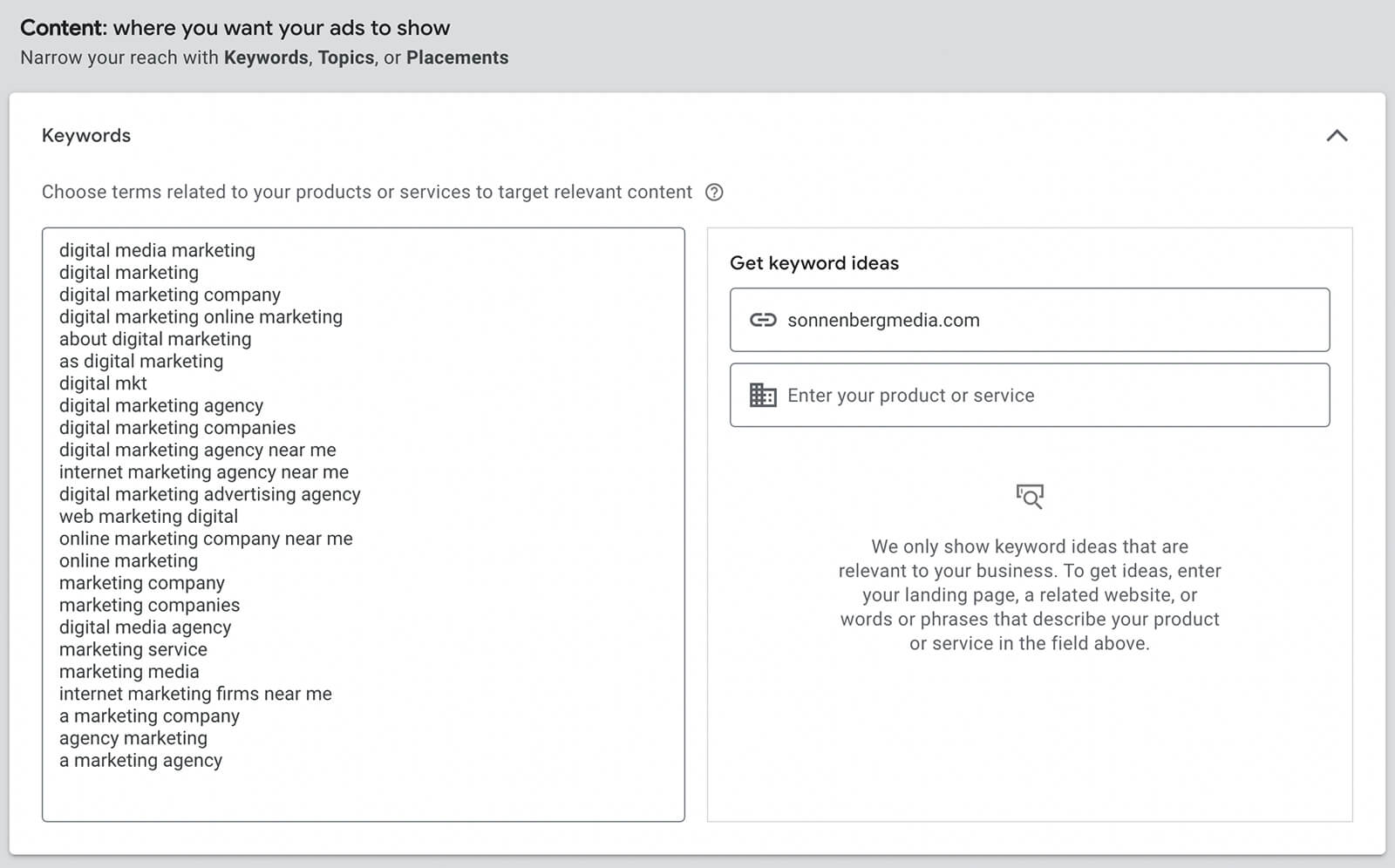
To get more ideas, type your product or service into the search bar. Then click to add any relevant keywords or apply the entire list at once.
#4: How to Target YouTube Ads to Competitors’ Content
One of the best parts of YouTube ad targeting is the range of options for showing your videos on competitors’ content. If your competitors have a large share of voice, high search volume, or a lot of content, targeting them can be incredibly helpful. With the right offer and targeting, you could win over some of your competitors’ potential customers.
How to Show YouTube Ads on Competitor Channels
If your competitors have active YouTube channels, you can place your video ads on any content they produce. At the ad group level, navigate to Placements and select YouTube Channels. Then add your competitors’ YouTube channels one by one.
To maximize the value you get from this tactic, be strategic about the video ads you run on competitor channels. For example, you might run a video ad that focuses on your brand’s unique value proposition and what sets your products and services apart from the competition.
How to Show YouTube Ads on Specific Competitor Videos
If your competitors have videos that get a lot of views, you might also consider placing your YouTube ads on specific videos. The process of targeting competitor videos is the same as choosing any other YouTube video. Under Placements, choose YouTube Videos and enter the URLs of the videos you want to target.
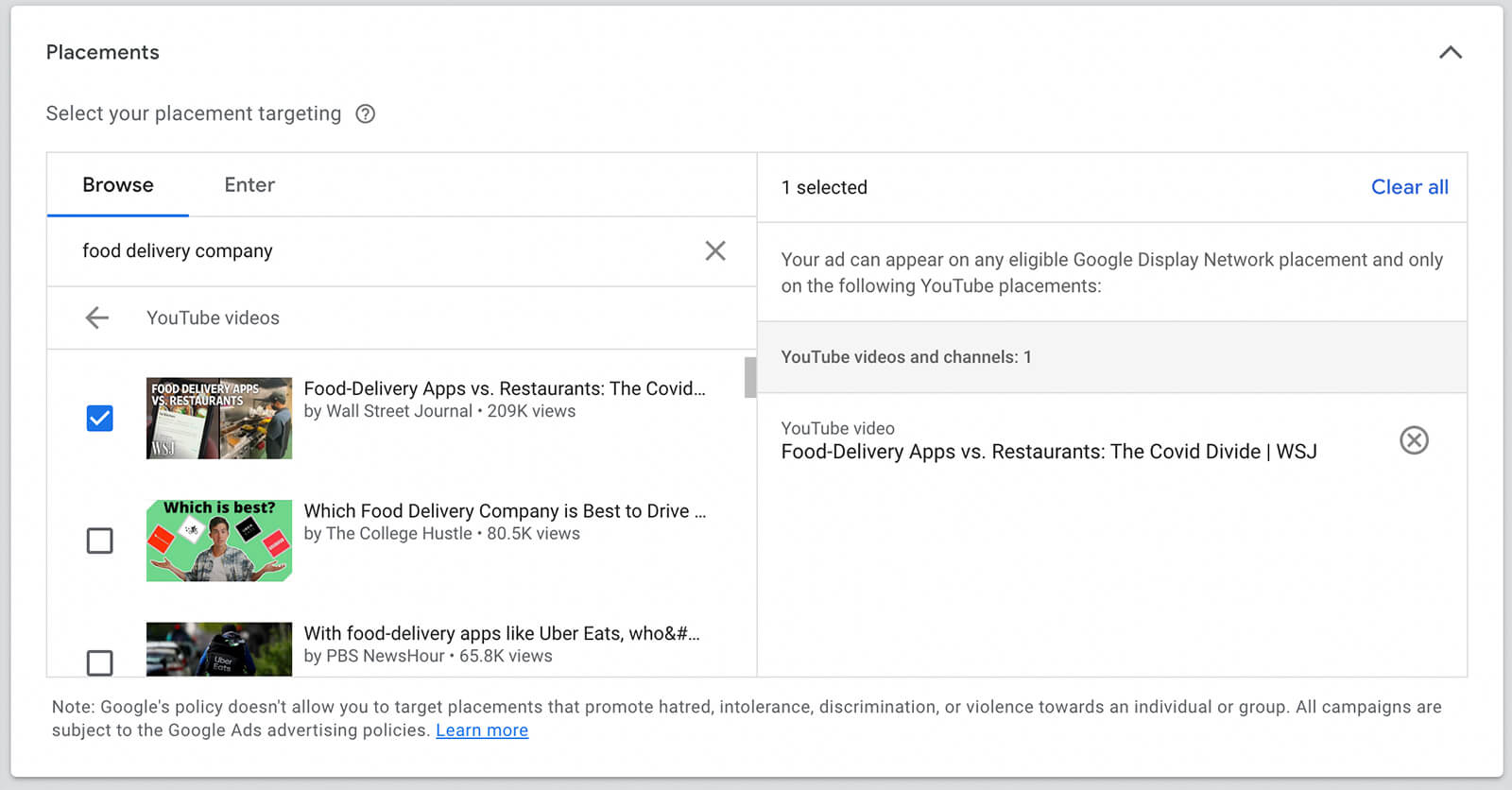
In the event that you don’t have specific videos in mind, you can use the search tool to find relevant videos to target. Then you can select all of the videos where you want your ad to run.
Similar to competitor channel targeting, competitor video targeting requires a tailored strategy. If you want to convert your competitors’ viewers or subscribers, consider running ads on videos designed for prospects at the beginning of their customer journey rather than videos designed for advanced users who are already loyal customers.
How to Show YouTube Ads Based on Competitor Keywords
Google Ads also gives advertisers the option to target competitor keywords. For example, you can target competitors’ brand names, product or service names, or other related terms. If you’re already using keyword targeting, you can add competitor keywords to your list to broaden the reach of your video campaign.
How to Review and Optimize YouTube Ads Content Targeting
To optimize your video ads and continue building better YouTube campaigns, review your Google Ads account’s content targeting data regularly. Open the Content drop-down in the left-hand menu to review metrics for topics, placements, and video keywords.
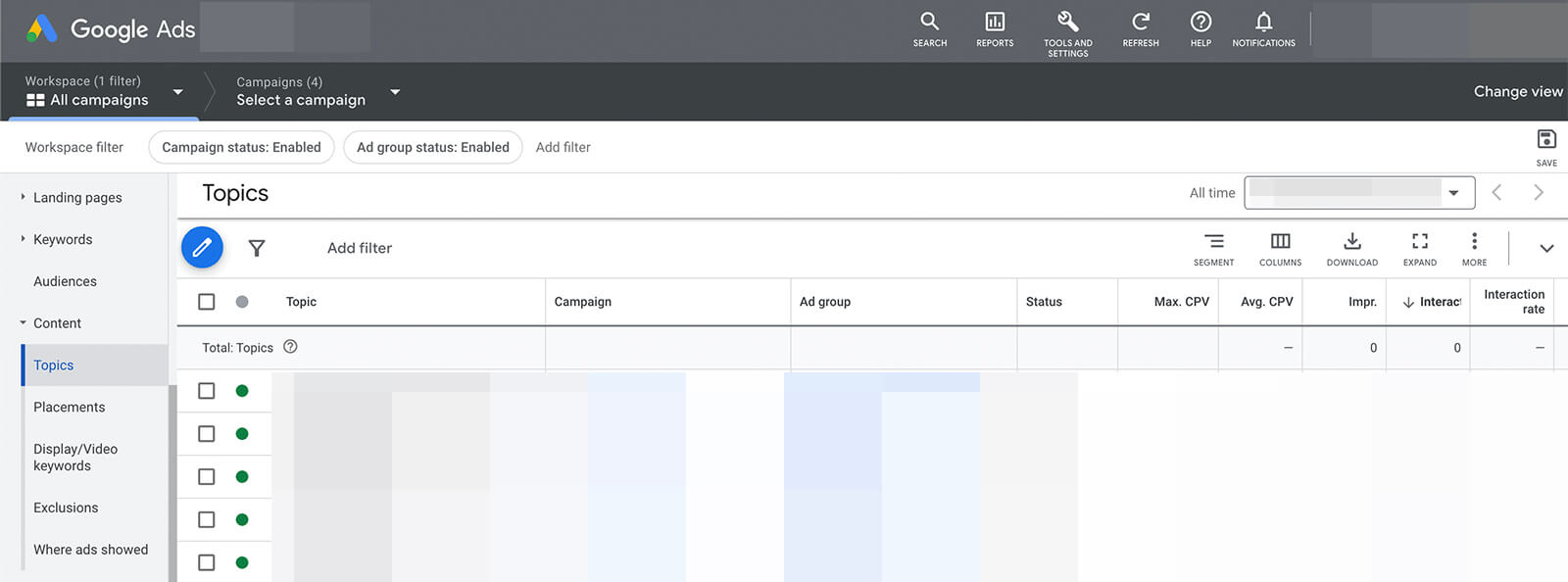
Use the column selector to add the metrics that are most important to your brand. Then sort your data to find the best-performing content. Make note of the top-performing content targets so you can repeat relevant options for future campaigns.
You can also identify under-performing content targets and pause or remove them from the ad group. Keep in mind that limiting ad delivery options can affect campaign performance so it’s a good idea to monitor ad group results closely after removing a targeting option.
How to Refine YouTube Ads Delivery by Devices
By default, YouTube ad campaigns display on all supported devices. But depending on your video ad or your offer, users may convert at a much higher rate on some devices than on others.
If you’ve already run video ads for the same or similar offers, it’s a good idea to check performance metrics for past campaigns. From your Google Ads dashboard, choose a campaign and select Devices in the left-hand menu.
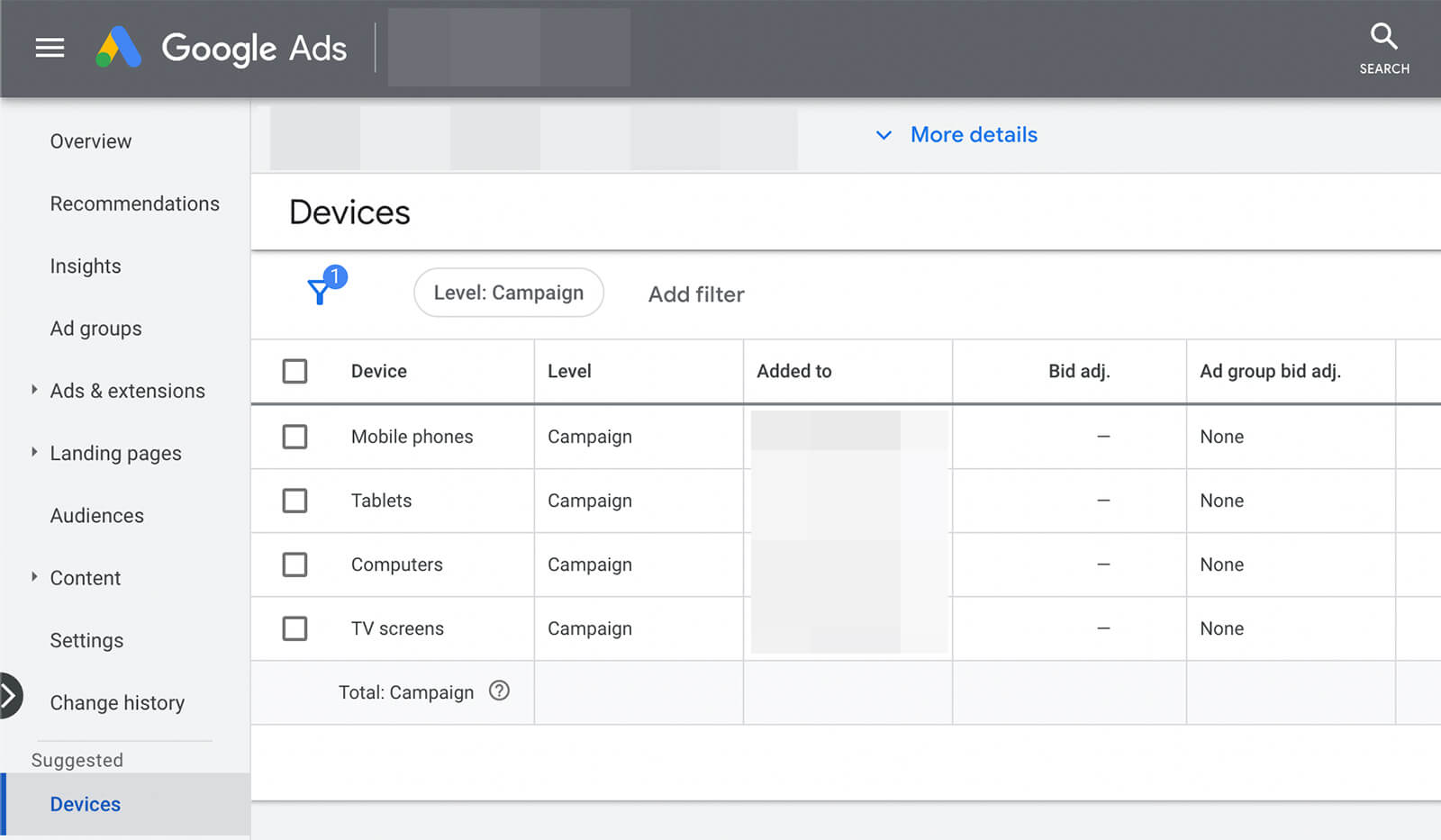
Then review the metrics for each device type. Did mobile phone users have a much more affordable cost per view or a higher conversion rate? Did desktop computer users have a higher view rate?
Once you identify the top-performing devices, you can adjust the Device settings at the campaign level. Scroll down to Content Exclusions and open the Additional Settings drop-down. Then select Set Specific Targeting for Devices.
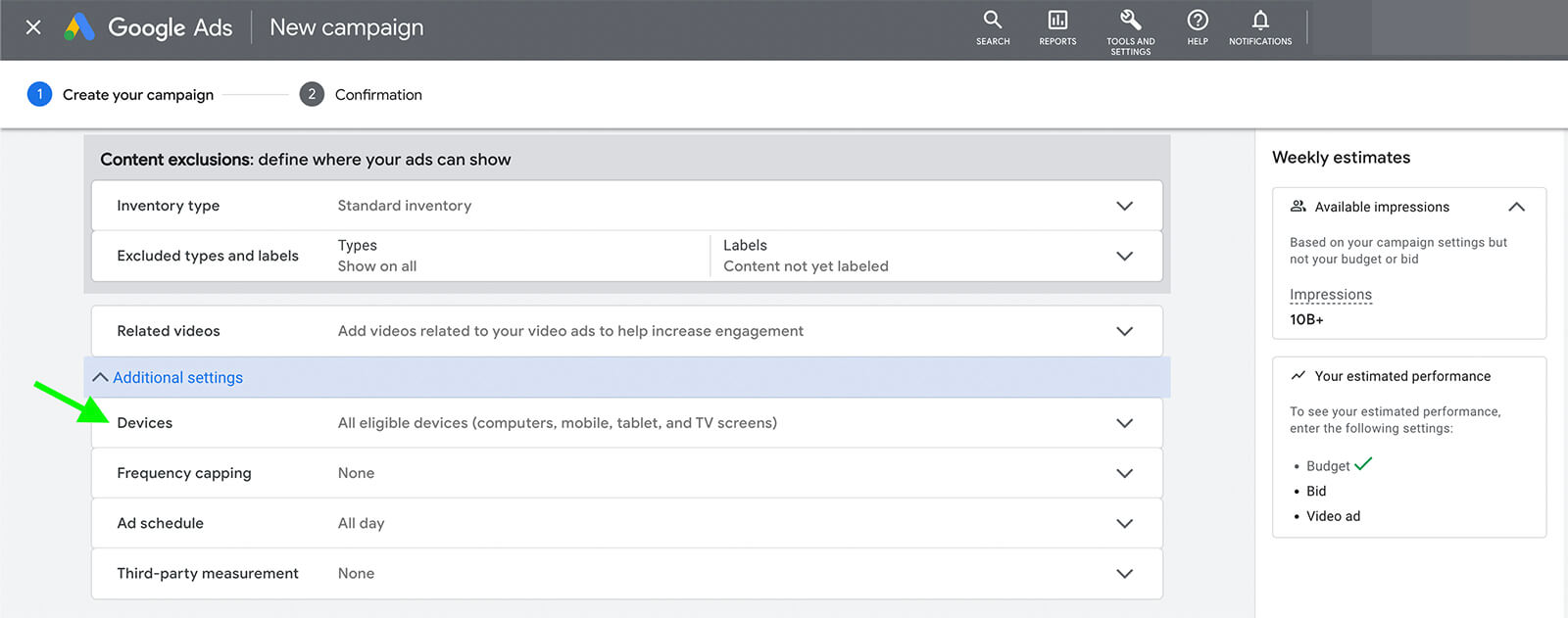
You can uncheck any of the categories (computers, mobile phones, tablets, and TV screens) to remove under-performing devices. To target specific groups of mobile phone and tablet users, you can also use the advanced targeting options.
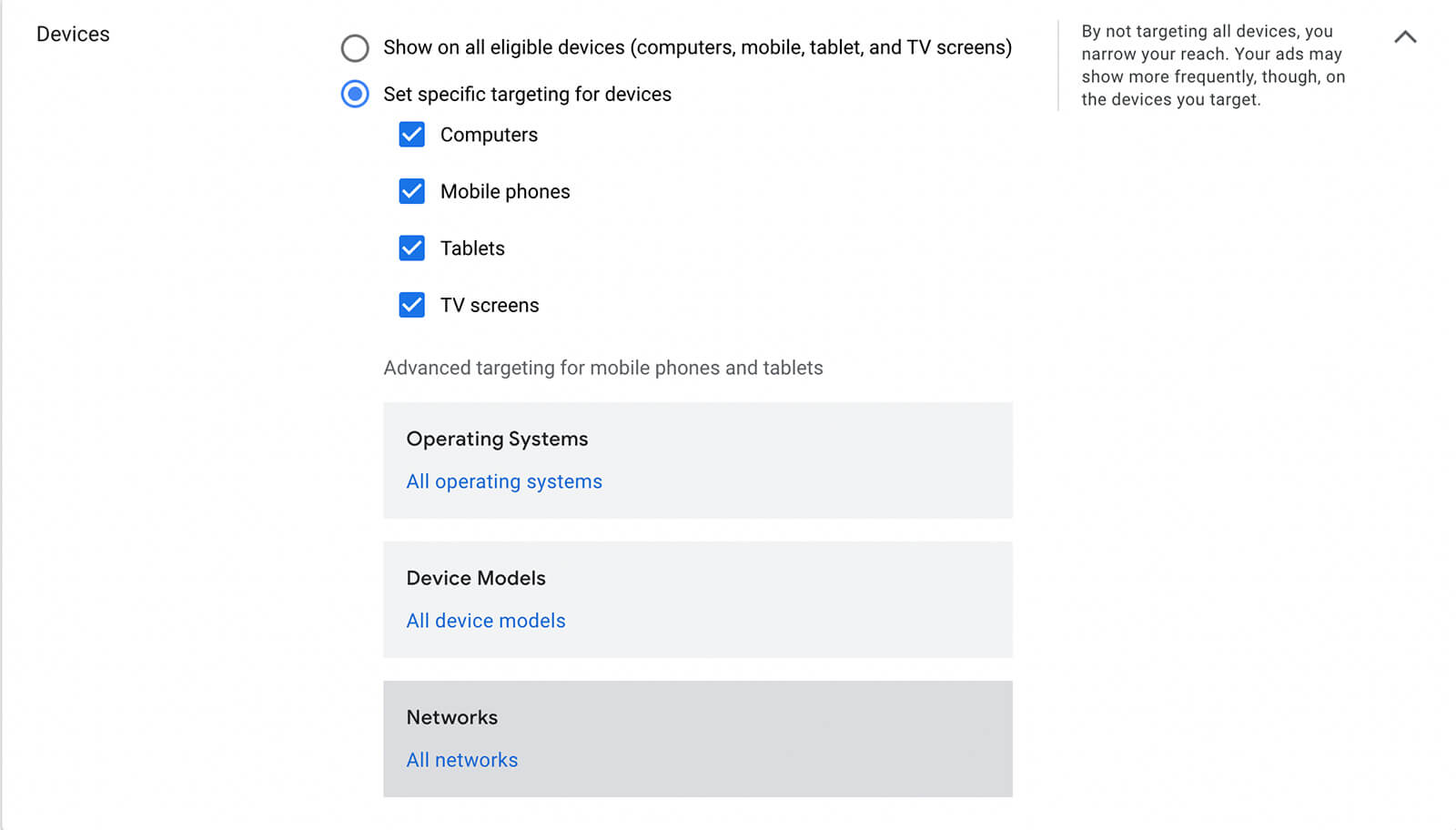
For example, you can target users by models, networks, and operating systems. Note that if you use the advanced targeting options for mobile phones and tablets, your YouTube ads won’t display on TV screens or computers, even if you’ve kept those boxes checked. If you choose incompatible device targeting, you’ll see an alert on the campaign setup screen.
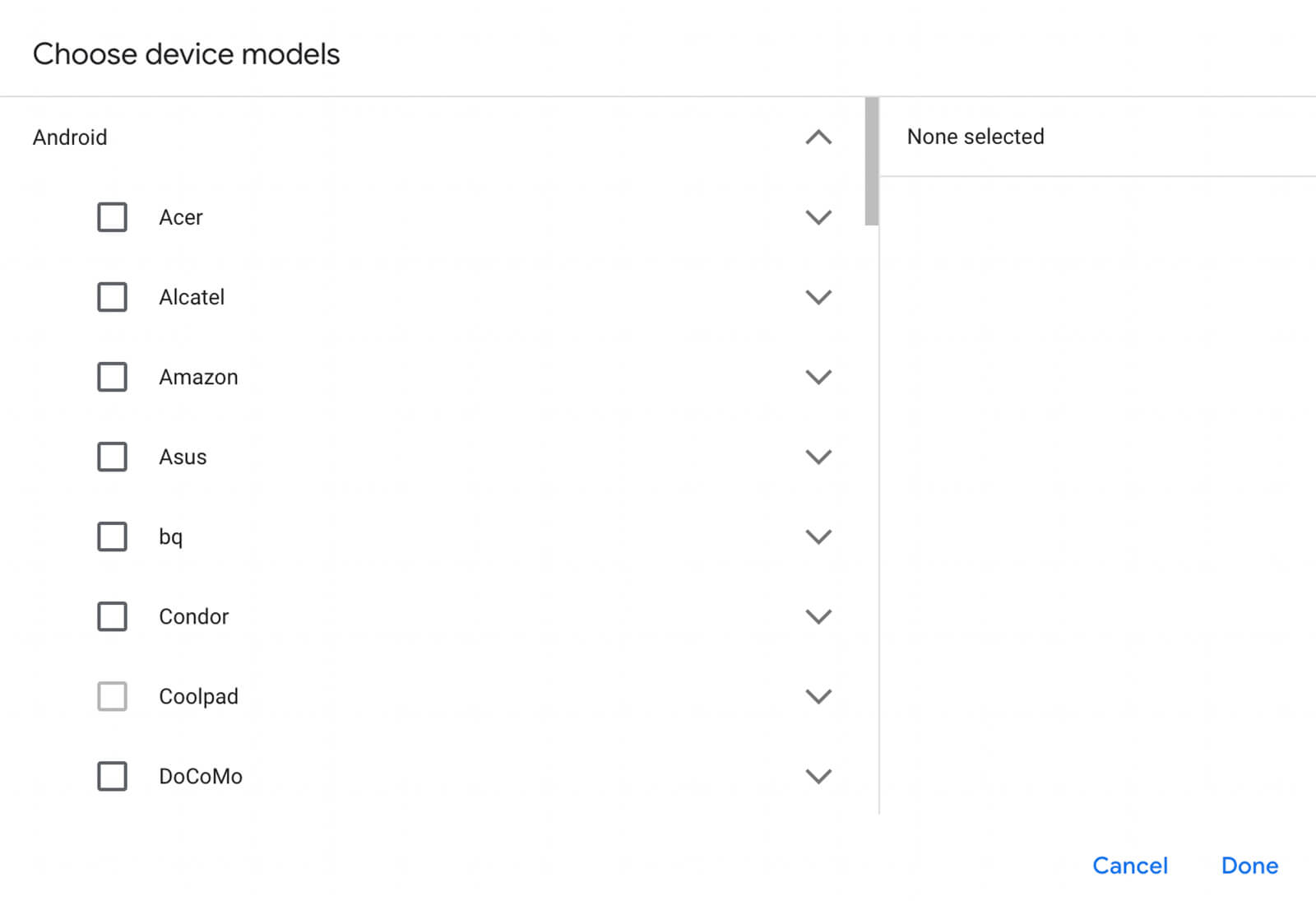
If you find that some devices are significantly under- or over-performing compared to others, you can take an additional step to optimize the campaign. Select a device, click Edit, and choose Change Bid Adjustments. Then increase or decrease the bid adjustment to spend more or less on specific device placements.
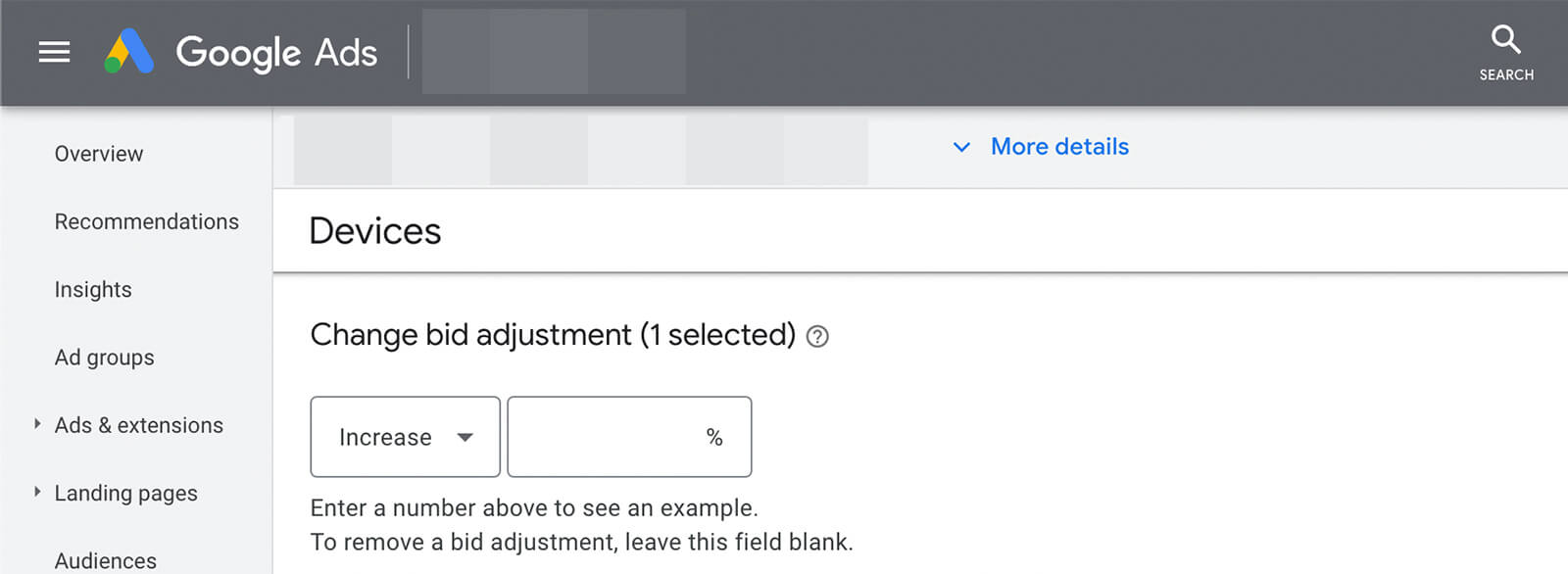
Conclusion
With the right YouTube ads content targeting signals, you can deliver ads to highly tailored audiences or expand your reach to find more potential customers. By combining audience and content targeting, you can deliver YouTube ads to ideal customers throughout the funnel.
Get More Advice on YouTube Ads Strategies:
- Explore how to properly set up and run three low-stakes video ads on YouTube.
- Discover 12 ad formats and targeting features that will enhance your video ad campaigns.
- Get 10 ideas for creating YouTube skippable in-stream ads that viewers won’t want to skip.
Stay Up-to-Date: Get New Marketing Articles Delivered to You!
Don't miss out on upcoming social media marketing insights and strategies! Sign up to receive notifications when we publish new articles on Social Media Examiner. Our expertly crafted content will help you stay ahead of the curve and drive results for your business. Click the link below to sign up now and receive our annual report!
Attention Agency Owners, Brand Marketers, and Consultants

Introducing the Marketing Agency Show–our newest podcast designed to explore the struggles of agency marketers.
Join show host and agency owner, Brooke Sellas, as she interviews agency marketers and digs deep into their biggest challenges. Explore topics like navigating rough economic times, leveraging AI, service diversification, client acquisition, and much more.
Just pull up your favorite podcast app, search for Marketing Agency Show and start listening. Or click the button below for more information.

